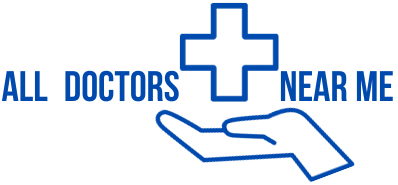Medi-Cal is California’s Medicaid program that provides comprehensive health insurance to low-income individuals and families. The income limits for Medi-Cal eligibility are determined by the federal poverty level (FPL), which is updated annually. By 2025, these limits will play a major role in determining who can access basic health care through the program. Understanding the income limits and how they apply to different household sizes is critical to determining Medi-Cal eligibility.
Federal Poverty Level and Income Limits
The federal poverty level (FPL) is the basis for determining Medi-Cal income limits. The FPL is updated annually by the U.S. Department of Health and Human Services and varies based on household size and location. Medi-Cal income limits are expressed as a percentage of the FPL. Most individuals must have an income equal to or less than 138% of the FPL to qualify for the program. This ratio is intended to provide health care to those who need it most, so that low-income individuals and families can also access coverage.
Medi-Cal Income Limits for Adults
For adults under age 65, the Medi-Cal income limit will be set at 138% of the federal poverty level in 2025. This income limit applies to single adults and couples without children or who are not pregnant. To determine eligibility, your household income must be below the 138% threshold. This threshold is recalculated each year based on changes in the FPL. For example, a single adult must have an annual income below a certain amount in 2025 to qualify for Medi-Cal.
For a household of two people, such as a couple, the joint income limit is slightly higher than the individual limit. These limits are adjusted annually based on inflation and other economic factors to ensure that Medi-Cal continues to support those who need health insurance.
Medi-Cal Income Limits for Pregnant Women and Children
Pregnant women and children have more relaxed income limits for Medi-Cal eligibility than adults. Pregnant women are eligible for Medi-Cal if their family income is 213% or less of the federal poverty line. This higher income limit is intended to ensure that expectant mothers receive the prenatal and postnatal care they need for a healthy pregnancy.
Income limits for children are generally higher than for adults and depend on the child’s age and other factors. In many cases, children whose family income is no more than 266% of the federal poverty line are eligible for Medi-Cal. The state strives to provide coverage to as many children as possible and to ensure that they receive the necessary medical care during their early developmental years.
Medi-Cal Income Limits for Seniors and People with Disabilities
Seniors and people with disabilities may be eligible for Medi-Cal even if their income exceeds the standard income limits. This depends on their specific circumstances. For example, the income limits for Medi-Cal under the Aged, Blind, and Disabled (ABD) program are based on the federal poverty level, but can be adjusted based on the applicant’s medical needs.
In many cases, seniors and people with disabilities are eligible for Medi-Cal with an income just above the standard threshold of 138% FPL. This is due to programs such as the Medi-Cal Access Program or the Medical Indigent Program, which allow higher-income individuals to obtain insurance if they have high medical expenses. Additionally, individuals who receive Supplemental Security Income (SSI) are typically automatically eligible for Medi-Cal.
Expanded Medi-Cal for Pregnant Women and Parents
The Affordable Care Act’s (ACA) Medicaid expansion expanded Medi-Cal eligibility to more individuals, including low-income adults without children. Pregnant women and parents of young children also benefit from more flexible income limits under the expanded program. For parents, the income limit is typically set at 138 percent of the federal poverty level. Parents who meet income guidelines can also qualify for health care.
The expansion also allows families without children under 18 and pregnant women to receive Medi-Cal if they meet income guidelines. This ensures that more Californians have access to basic health care, spouse, and other dependents to calculate your income.
Changes to Medi-Cal Income Limits in 2025
While the specific income limits for 2025 have not yet been finalized, they are expected to follow a similar structure as in previous years, with minor adjustments to account for changes in the federal poverty level. Each year, the California Department of Health Care Services updates these limits to ensure they are consistent with the state’s poverty level.
California also ensures that the income limits remain in line with inflation and the cost of living. This allows Medi-Cal to provide assistance to those who are experiencing financial hardship due to rising costs of living. The state wants to ensure that the most vulnerable populations have access to Medi-Cal coverage and that the program remains sustainable.
How to Apply for Medi-Cal in 2025
To apply for Medi-Cal in 2025, individuals must provide information about their income, family size, where they live, and other relevant factors. You can do this online through the Covered California website or at your local office. By providing accurate and up-to-date information, applicants can determine whether they meet the income limits and qualify for Medi-Cal coverage.
Finally
In 2025, Medi-Cal income limits will continue to be based on the federal poverty level. Adjustments are made annually to ensure that low-income individuals and families have access to basic health insurance. These limits vary based on factors such as family size, age, pregnancy, and disability. Medi-Cal provides essential health care to millions of Californians. Understanding the income requirements is critical to determining eligibility. By understanding income limits and applying through the proper channels, individuals can get the health insurance they need.
